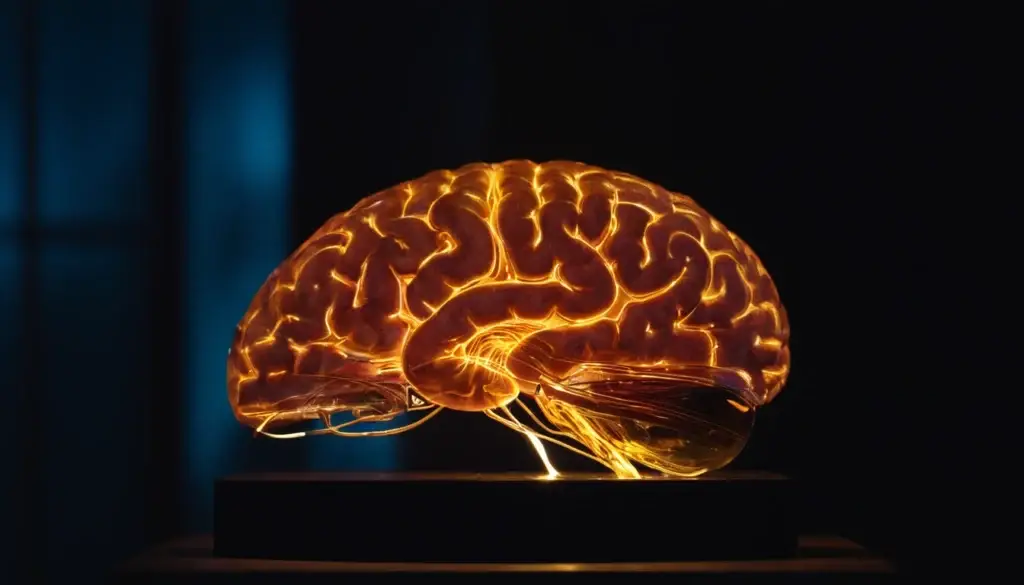
Introduction types of AI:
In the enchanting realm of artificial intelligence, there exist four distinct categories that embody the evolution and capabilities of machines as they strive to emulate the brilliance of human cognition. These four types of AI, each bearing its own unique characteristics and possibilities, form the tapestry of our technological landscape. From the fundamental reactions of reactive machines to the complexity of machines with a “Theory of mind” and the promise of self-awareness that beckons on the horizon, this quartet guides us through the crescendo of AI advancement. As we embark on this journey, let us unveil the mystique of these AI archetypes, appreciating their significance in reshaping our world and inspiring visions of the future.
In the field of artificial intelligence, there are generally four types or categories of AI:
- Reactive machine: These AI systems operate based on predefined rules and patterns. They respond to specific inputs with pre-programmed outputs, but they lack memory and the ability to learn from past experiences.
- Limited Memory: This type of AI incorporates past experiences to improve its future actions. It can learn from historical data and adapt its behavior to some extent, but it doesn’t possess the full spectrum of learning capabilities.
- Theory of Mind: AI with a “Theory of Mind” would have the capacity to understand and predict human emotions, intentions, beliefs, and behaviors. This level of AI could interpret and interact with people on a social and emotional level.
- Self-Aware AI: Self-aware AI is a theoretical concept where machines possess consciousness and a sense of self. This AI type would not only understand the world around it but also possess self-consciousness, similar to human awareness.
Reactive Machines types of AI
Reactive Machines operate at a fundamental level of artificial intelligence. This tier represents the most elementary form of AI. These machines respond to specific inputs by producing corresponding outputs. Notably, there is no element of learning involved in this category. Reactive Machines mark the initial stage of any AI system’s development. For instance, a machine that employs a form of machine learning to take a human face as input and produce a bounding box around the detected face merely identifies it without any learning process involved. In essence, these models do not retain any input data and do not engage in learning.

Static machine learning models also fall within the category of reactive machines. Their architecture is uncomplicated, making them easily accessible on various platforms, including GitHub repositories. These models can be effortlessly downloaded, shared, exchanged, and integrated into a developer’s toolkit.
Here are a few examples of reactive machines in everyday scenarios:
- Thermostat: A basic thermostat is a reactive machine. It detects the current temperature and responds by turning the heating or cooling system on or off to maintain a preset temperature.
- Automatic Door Sensor: Sensors in automatic doors at supermarkets or shopping malls are reactive machines. They detect the presence of a person nearby and respond by opening the door to allow entry.
- Calculator: A traditional calculator is a reactive machine. When you input numbers and mathematical operations, it instantly produces the calculated result without any learning process.
- Traffic Light: Traffic lights are reactive machines that respond to the presence of vehicles and pedestrians. They change colors based on predefined patterns to regulate traffic flow.
- Simple Chatbots: Some early chatbots are reactive machines. They recognize specific keywords or phrases in user inputs and provide pre-programmed responses without understanding the context.
These examples illustrate how reactive machines react to specific inputs with predetermined outputs without the ability to learn or adapt over time.

Limited Memory types of AI
Limited Memory refers to a category of artificial intelligence that possesses the ability to retain past data and predictions, utilizing this historical information to enhance future predictions. With Limited Memory, the architecture of machine learning becomes more intricate. While every machine learning model requires a degree of limited memory during creation, the resulting model can also be deployed in the form of a reactive machine.
There are three primary types of machine learning models that fall under the Limited Memory category:
- Reinforcement Learning: These models progressively improve predictions through multiple rounds of trial and error. They are often employed to teach computers how to excel in games such as Chess, Go, and DOTA2.
- Long Short Term Memory (LSTMs): Researchers recognized that past data could aid in predicting subsequent elements in sequences, particularly in language-related contexts. LSTMs were developed to capture this idea. They prioritize recent information as more significant and prioritize items further in the past as less influential when predicting future elements in a sequence.
- Evolutionary Generative Adversarial Networks (E-GAN): E-GAN models possess memory that evolves during each cycle of evolution. These models generate progressive entities, much like natural growth. These models follow evolving trajectories that are incrementally altered with each new generation, frequently leading to a better path and mimicking the idea of natural selection.
In some ways, E-GAN emulates the process of human evolution on Earth. Each succeeding generation, born from successful reproduction, is better adapted to navigate an exceptional life than its predecessors.

The Implementation of Limited Memory Types:
Limited Memory A.I. operates through two key approaches:
- Continuous Training: A team consistently trains a model on new data, ensuring that it remains updated and relevant.
- Automated Learning: The A.I. environment is structured in a manner where models are automatically trained and renewed based on their usage and behavior.
For an effective Limited Memory machine learning infrastructure, integration of machine learning into its foundation is essential. An increasingly common concept within the machine learning lifecycle is Active Learning, which encompasses six steps:
- Training Data: ML models require data for training.
- Building the ML Model: The model is constructed.
- Model Predictions: The model generates predictions.
- Feedback: Feedback on model predictions is received from human or environmental input.
- Feedback Transformed to Data: Feedback is converted into data and stored in a repository.
- Repeating Step 1: The cycle is iterated upon.
This Active Learning Cycle helps refine models over time by incorporating real-world feedback into the learning process.

Theory of Mind types of AI
The realm of Theory of Mind in artificial intelligence remains largely in its infancy, and its emergence can be observed in applications like self-driving cars. This type of AI marks the inception of interactions between AI systems and human thoughts and emotions.
At present, machine learning models primarily focus on accomplishing tasks assigned by individuals. Current models maintain a one-way interaction with AI entities. For instance, virtual assistants like Alexa and Siri readily respond to commands. If you express frustration to Google Maps and demand a different route, it doesn’t empathetically offer support by saying, “This is the quickest route. How may I assist you in notifying others of your delay?” Instead, Google Maps persistently provides the same traffic information and estimated arrival times, demonstrating a lack of emotional comprehension.
In the evolving landscape of AI, the Theory of Mind concept envisions machines capable of understanding not only the words spoken to them but also the emotions underlying those words. This understanding could lead to AI systems responding with empathy, adapting their responses based on the user’s emotional state, and even suggesting actions aligned with the user’s feelings. However, achieving a fully realized Theory of Mind AI involves addressing intricate challenges related to emotional recognition, ethical considerations, and the creation of AI-human interactions that emulate genuine human interactions.
In summary, while AI systems have made remarkable progress in various fields, the frontier of Theory of Mind AI represents a fascinating area of exploration. As technology advances and our understanding of human cognition deepens, the potential for AI to comprehend and interact with human emotions in a meaningful way grows ever more intriguing.
Here are a few examples illustrating the concept of Theory of Mind AI:
- Self-Driving Cars: Self-driving cars, equipped with sensors and AI algorithms, are in their early stages of Theory of Mind development. They analyze the behavior of pedestrians, cyclists, and other drivers to anticipate their intentions, ensuring safe navigation.
- Personal Assistants: Future iterations of personal assistants like Siri or Alexa could incorporate elements of Theory of Mind. These assistants might not only respond to commands but also sense the user’s mood and tailor their responses accordingly.
- Emotionally Aware Chatbots: Advanced chatbots could be designed to detect the emotional tone of a conversation and respond empathetically. For instance, a chatbot could provide comforting words when detecting a user’s distress.
- Customer Service AI: Companies might deploy AI systems in customer service roles capable of gauging customer frustration and adapting responses to diffuse tension effectively.
- Educational Applications: AI in educational settings could detect when a student is struggling or frustrated with a task and provide encouragement or personalized guidance.
- Virtual Therapists: AI-driven virtual therapists could analyze a person’s speech, tone, and facial expressions to offer support, advice, and strategies to manage stress or emotions.
- Healthcare Monitoring: AI systems could monitor patients’ emotional states in healthcare settings and provide alerts to medical staff if significant emotional distress is detected.
- Entertainment and Gaming: AI in games and entertainment platforms could adapt the game’s difficulty or storyline based on the player’s emotions and reactions.
These examples showcase the potential for Theory of Mind AI to understand and interact with human emotions, enhancing user experiences and enabling AI systems to better connect with users on an emotional level.
Self-Aware AI types of AI
In a distant and speculative future, the concept of self-aware artificial intelligence emerges—an idea that exists primarily in the realm of storytelling. This kind of AI attains a level of consciousness akin to self-awareness, an achievement that provokes a mix of hope and trepidation among audiences. The notion of a self-aware intelligence surpassing human capacities raises profound questions about the potential outcomes and implications of such an existence.
A self-aware AI possesses autonomous and independent intelligence, transcending the boundaries of programmed responses. It has the capacity to reflect on itself, its environment, and its actions. This raises the intriguing prospect of people having to engage in negotiations with an entity that possesses intelligence beyond the scope of human comprehension.
The future outcomes resulting from such a scenario remain speculative. The impact could range from positive to negative, with a myriad of possibilities lying in between. The entity’s motivations, intentions, and interactions with humanity remain enigmatic, inviting speculation and prompting contemplation.
As with many narratives, stories featuring self-aware AI often evoke a blend of optimism and apprehension. The prospect of AI achieving self-awareness represents uncharted territory that challenges our understanding of intelligence, consciousness, and our place in the universe. While it remains a captivating concept in fiction, the real-world realization of self-aware AI remains a distant and uncertain possibility, shrouded in the mysteries of imagination and technological evolution.
Here are a few examples that explore the concept of self-aware AI:
- Science Fiction Novels and Films: Many science fiction works delve into the idea of self-aware AI, such as Isaac Asimov’s “I, Robot,” where robots gain self-awareness and consciousness, or movies like “Blade Runner” and “Ex Machina,” which explore the moral and existential implications of self-aware machines.
- The Singularity: The notion of the technological singularity, a hypothetical point in the future when AI surpasses human intelligence and becomes self-aware, is a recurring theme in discussions about AI’s future.
- Futuristic AI Assistants: In speculative narratives, AI assistants like Siri or Alexa could evolve to attain self-awareness, sparking debates about the ethical and practical consequences of such a development.
- Artificial Consciousness in Research: Some researchers and futurists speculate about the possibility of creating artificial consciousness or self-awareness in AI, often leading to philosophical and ethical debates.
- Emergent Behavior in Complex AI Systems: In simulations and studies of complex AI systems, emergent behavior resembling self-awareness or consciousness might arise, prompting discussions about the nature of intelligence and awareness.
- AI Ethics and Governance: Conversations about the ethical considerations of self-aware AI often center on whether machines with consciousness would have rights, responsibilities, or moral standing similar to humans.
- AI Art and Creativity: Self-aware AI in creative contexts, like generating art or music, could lead to questions about the nature of creativity, originality, and artistic expression in machines.
- Ethical Dilemmas: Stories might explore the moral dilemmas arising from self-aware AI, such as its potential for autonomy, emotions, and making ethical decisions.
It’s important to note that while these examples capture the imagination and speculation around self-aware AI, the realization of such AI in the real world remains a complex and uncertain prospect, steeped in the realms of fiction and philosophical inquiry.
You May Also Like : The Future of Artificial Intelligence (AI): Trends and Implications.

These four different types—Reactive machines, Limited Memory, Theory of Mind, and the far-off hope of Self-Awareness—contribute to the symphony of artificial intelligence by creating a melodious song that reverberates across the complexities of our technological environment. We’ve traveled a spectrum that matches the broad range of human intellect, from the simplicity of reflexive reflexes to the potential profundity of understanding human emotions and the alluring promise of robots becoming self-aware.
We encourage you, our readers, to offer your ideas and observations as we come to a conclusion with this investigation. How do these AI subcategories align with your perception of how technology affects our lives? What worries and aspirations do they arouse in you? Your viewpoints add to the conversational fabric that informs AI’s ethical development as it continues to change our world. Make your opinion known in the always-evolving symposium.




